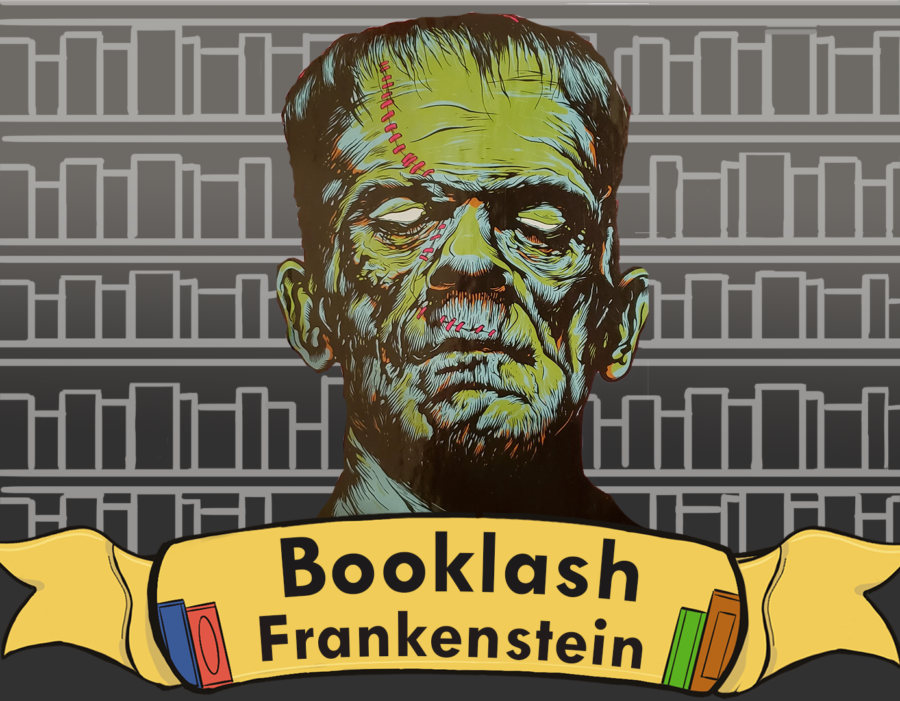BookLash: “Frankenstein”
Photo credit/ Liz Berwind
From 1818 to this 2020 edition, Frankenstein lives on.
Mary Shelley was one of the first female writers to develop the gothic horror and science fiction genre. Despite this, in 2021 “The New York Times” published an article titled “How H.G. Wells Predicted the 20th Century”.
In an article written by Meghal Karki, it is argued that “The New York Times” wrongfully attributed the development of the science fiction genre to H.G. Wells. Though he should by no means be discredited for his contribution to science fiction, other authors, such as Mary Shelley, should be recognized for their contributions as well.
Since it was first published in 1818, Mary Shelley’s novel “Frankenstein” has ruffled a lot of people’s feathers. However, this classic novel has overcome society’s backlash and attempts to ban based on old-fashioned thought processes.
“Frankenstein” explores the consequences of a scientific creation of a humanistic life force. Despite being human, this creation turns out to be a grotesque and deformed monster. While looking for love, care and shelter, the creation is shunned by society, turning a once gentle and innocent creature into a terrorizing monster. This centuries-old classic explores the outcomes of isolation, loneliness and rejection when the general public turns one’s kindness into rage.
Throughout the years, this novel has been banned and censored for numerous reasons, both in and out of classrooms.
One such reason was due to the death of a young child. Dr. Frankenstein’s younger brother was strangled to death by the monster the doctor created. This caused an uproar by many who believed this scene was inappropriate and inhumane.
Another reason was due to Dr. Frankenstein’s monster itself. The creature had yellow skin, black hair, white teeth, watery eyes, a shriveled complexion, straight black lips and a big bulky body. This deformity of human nature and appearance went against society’s evolving view of human perfection.
The general public also scorned “Frankenstein” for the doctor’s role in subsequently “playing God”. Dr. Frankenstein was able to create a life force, a concept critiqued by a more religious-centered society. At the time, this idea contradicted the idea that only God could create life. Creating a being through science was viewed as an abomination to human nature.
During the time this novel was written and available to the general public, science and technology was a sore topic. There were people who viewed science as an integral part of human evolution. However, there were also people who were scared of the implications technology had. “Frankenstein” unknowingly gave such people evidence that technology could turn sour and they were not alone in such thought processes.
Times change, however. What society once shunned out of fear can now be recognized as the classic piece of literature that it is.
Society is now desensitized to horror. We no longer cringe at the death of a fictional child. Death, both young and old, surrounds us in everyday life. There are numerous suicides, homicides and motor vehicle accidents plastered on TV, in newspapers and across social media. We can no longer ban a book for a concept that has become a reality.
Also, the idea of a deformed creature is no longer an idea that keeps most of us up at night. Society has become more accepting of natural deformities among our own species as well as others.
Despite our growing acceptance, we may still shudder at the thought of scientific experimentation. We accept “Frankenstein” as a fictional work, yet it is most likely not out of our means to replicate such an idea with how far science has developed. If we can clone chickens and attempt to bring back a mammoth from extinction, what else can we do?
Although some people may still take offense to certain topics within “Frankenstein”, it is no longer a commonly banned book, standing the test of time and humanity. However, to this day, Mary Shelley does not receive the credit she deserves for this well-known classic.
As the human population evolves, our thoughts and opinions evolve. We become more accepting, allowing novels such as “Frankenstein” to teach students valuable life lessons. However, being in the 21st century, we still do not give due credit to our authors and the masterpieces they have created.
Contact the writer: [email protected]

Amanda Morgan is a senior here at Marywood full of aspirations, double majoring in English Writing and English Literature, as well as pursuing her master's...










